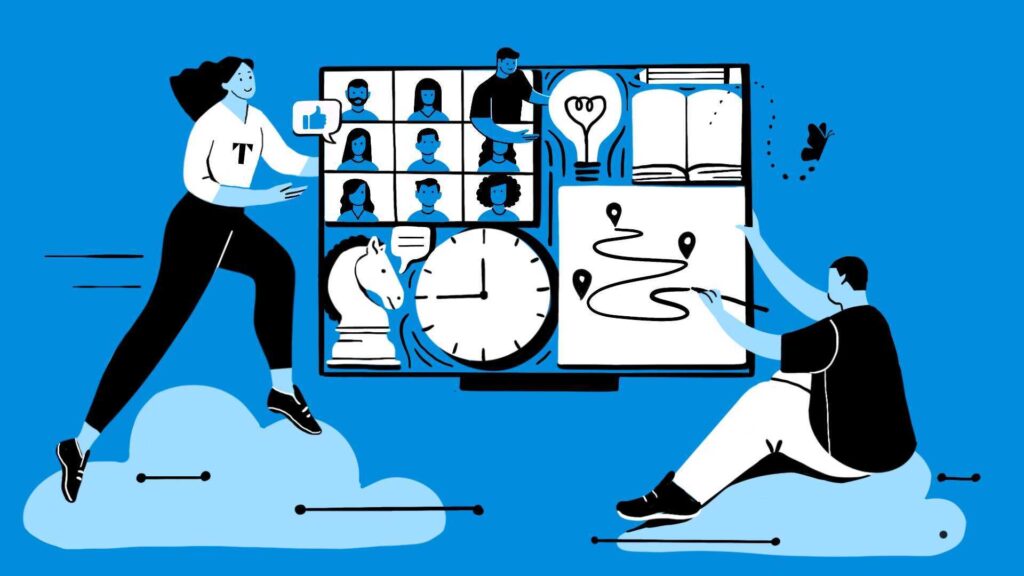The tangible benefits of virtual collaboration
Workshops are a powerful and efficient way to define and align on strategy. And while in-person gatherings have certain upsides, the virtual setting gives you a number of opportunities to design a workshop that is fun, dynamic, and yields results.
We’re going to take a look at our approach, as well as the benefits, using a Nature Conservancy / Arizona Thrives virtual strategy session as an example. The Arizona Thrives initiative is a coordinated effort by businesses, governments, and other organizations to develop a path forward in achieving a healthy economy, as more communities transition to clean air, clean energy, and low carbon emissions.
Save time: start before you start
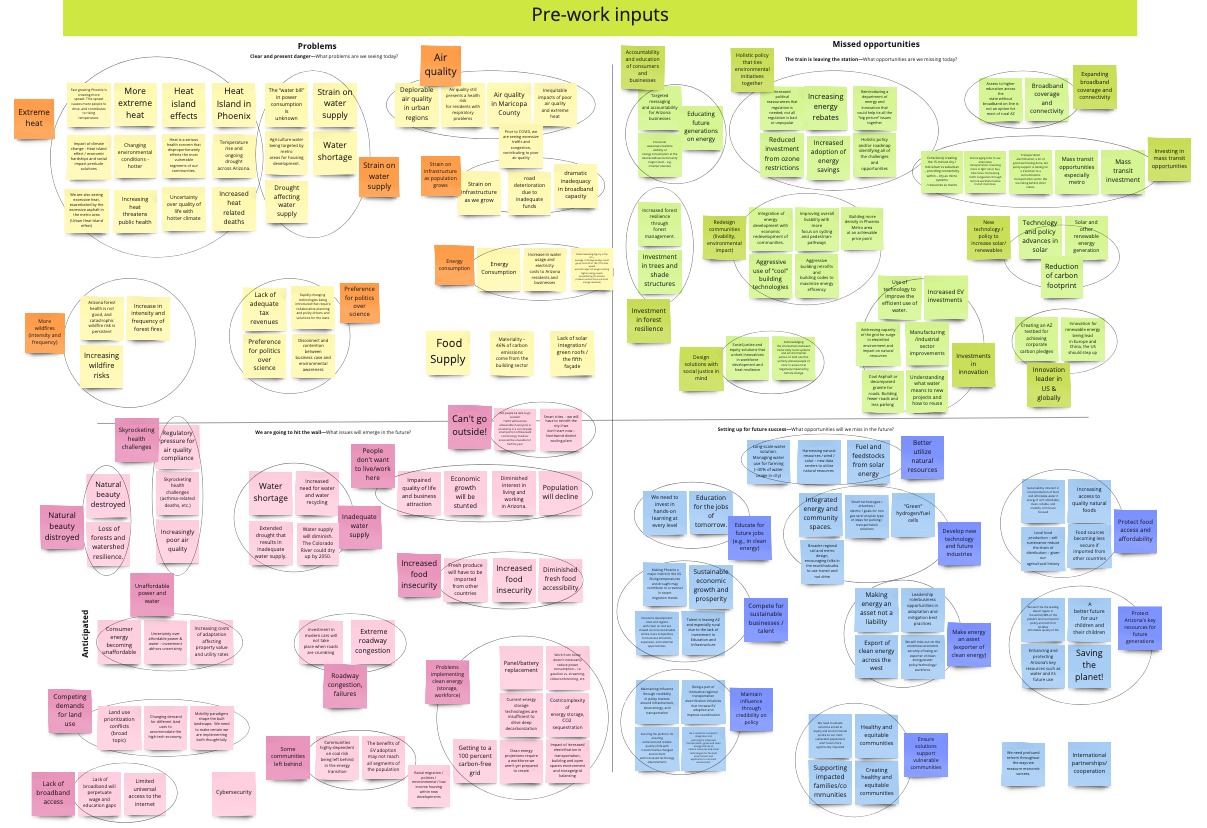
A session that normally takes six to eight hours in person has to be reimagined for a virtual setting. Zoom fatigue is real. To mitigate virtual meeting burnout, consider if some aspects of your workshop can be accomplished with prework. In the Arizona Thrives workshop, participants were asked to fill in this “Case for Change” grid ahead of time. Once the grid is pre-populated, an artist can add drawings to sticky notes.
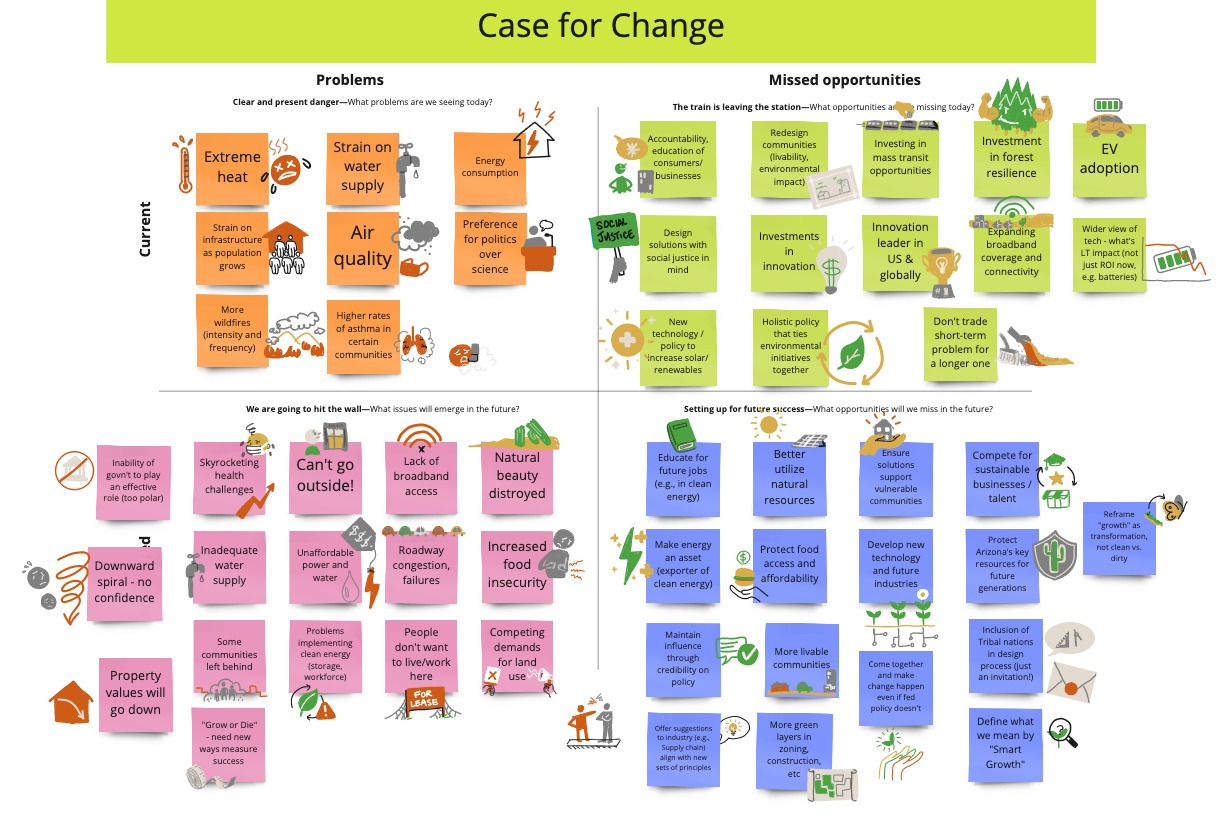
Adding visuals makes these ideas visible and tangible and creates value in a number of important ways.
- As participants join the workshop, they immediately understand that their input has been seen and considered
- Each drawing becomes a waypoint to help participants navigate ideas
- The visuals aid in engagement with, and retention of, the information
- And, most importantly, they prime everyone for what’s to come
Supercharge engagement: use visuals to create meaning
Visual storytelling is integral to our approach, and the best way to engage a virtual group is by pairing a facilitator with a visual practitioner. The practice goes by many names (live sketching, graphic recording, visual note-taking) but they all come down to the same thing: visualizing a discussion in real-time. Here’s what it looks like when it happens.
Having reviewed the case for change pre-work, the facilitator splits participants into groups. The drawings from the pre-work now help to spark inspiration around two questions: What happens if we do change? What happens if we don’t change?
While participants brainstorm answers to these questions, a live sketcher (or several!) is busy visualizing the scenarios right as the group imagines them. This results in a cohesive picture and high-level story from each group.
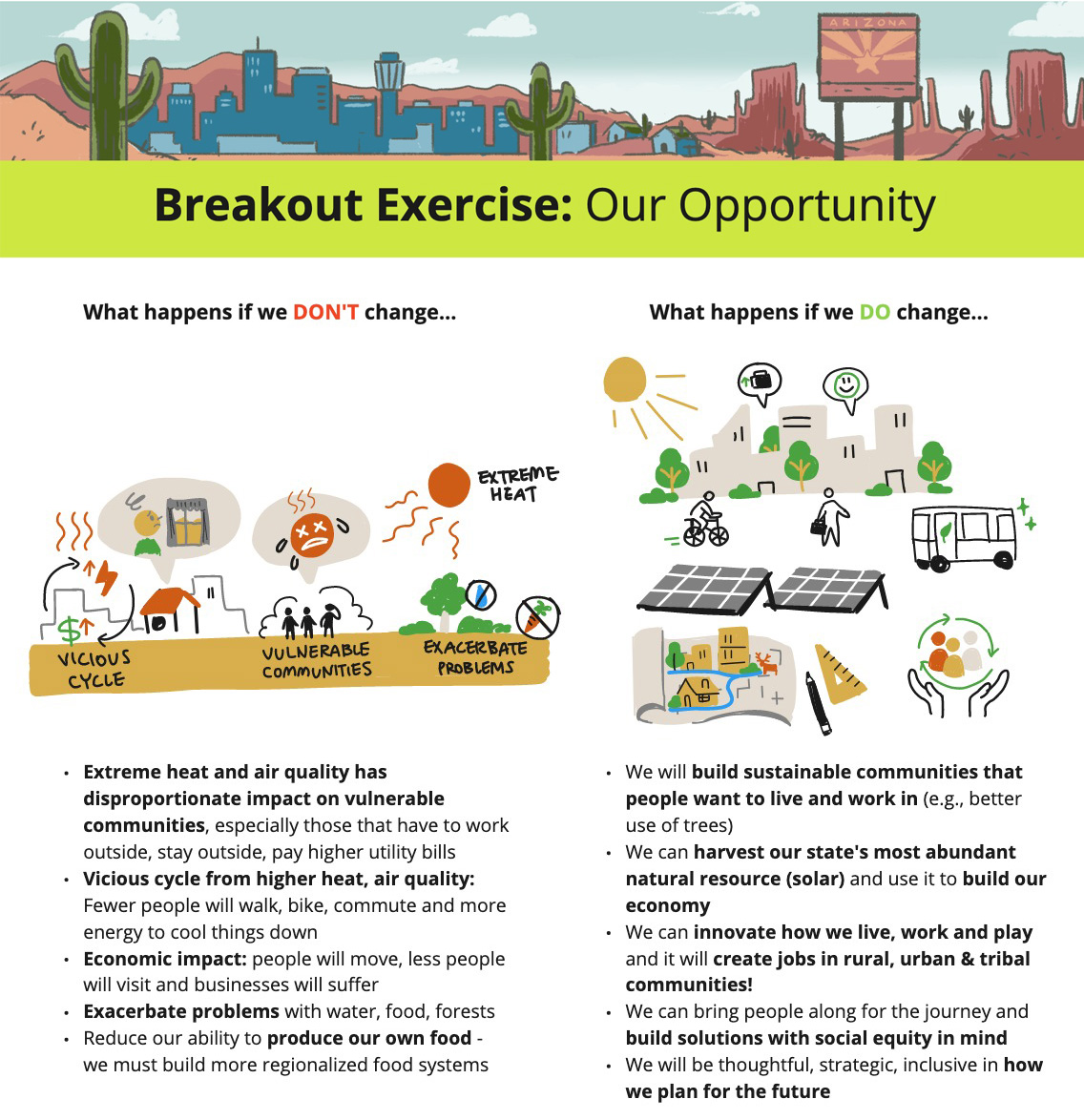
The combination of words and visuals is powerful. It energizes the proceedings and the drawings make things more tangible and when each group goes to report back. Participants have a handy map to help them formulate their presentation to the larger group. Which leads us to…
Accomplish more: have groups work in parallel
Remember that this same exercise is being done by multiple groups simultaneously. This means we’re creating several visual maps, all at once, in the span of an hour.
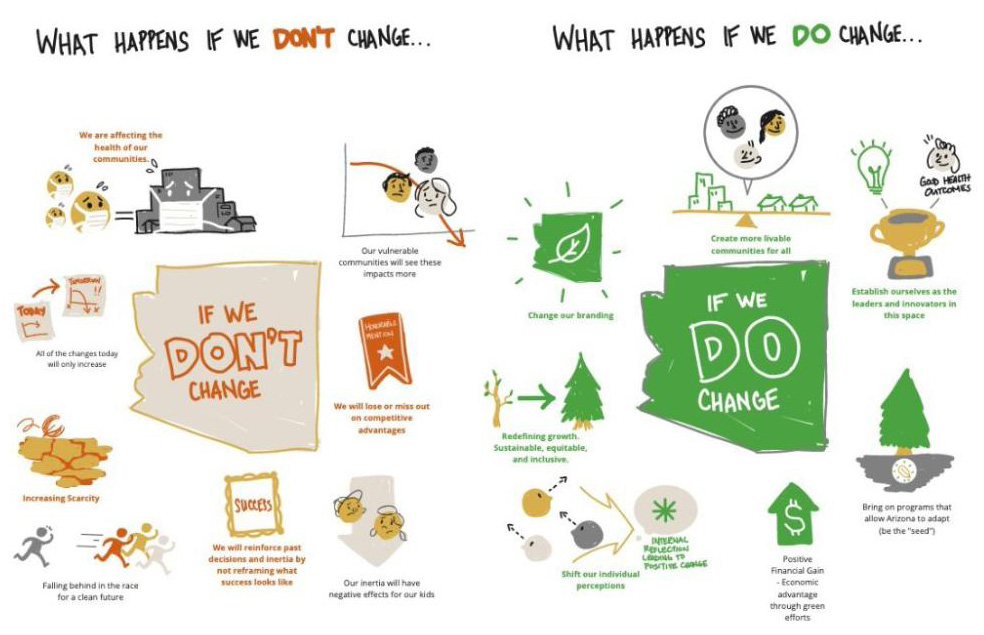
The volume of output that comes from these exercises can be overwhelming, and this, again, is where our visual approach is especially helpful.
During the read-out with the larger group, visual practitioners begin to coalesce the ideas and visuals from each team’s presentation. This is where platforms like Miro and Mural really sing. The strongest, most resonant ideas from each group can be moved around and reassembled to form a larger picture, a more complete story.
Aided by additional illustrated elements and an overarching design framework, by the end of the workshop you can have the first draft of a new strategy for going forward.
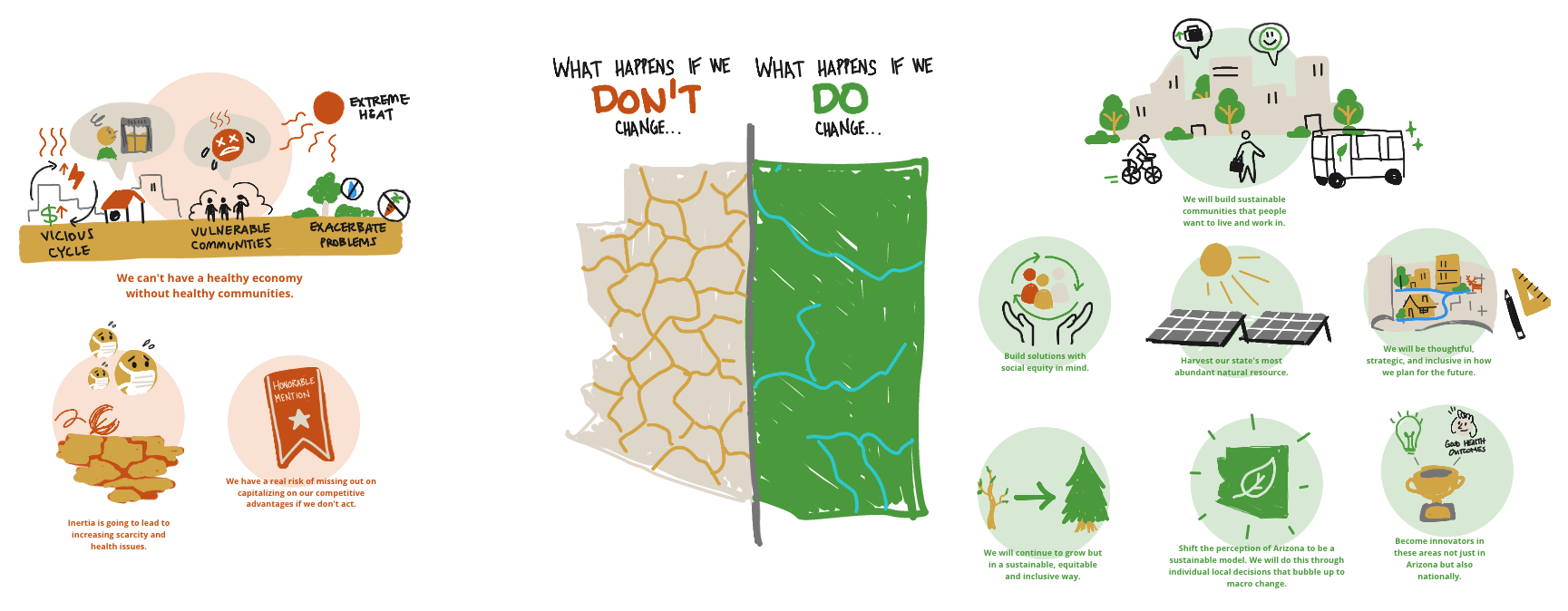
Build a foundation for change: get your story out there
For some groups, this level of fidelity is enough to move forward and take action.
For others, it’s only the beginning of a full visual storytelling campaign designed to create understanding, buy-in, and change. While simple, these early sketches serve as a launchpad for any number of integrated communications: videos, infographics, interactive experiences, and more. Whether you end up with one visual tool or a suite of communications, it’s now out there—working to keep your team focused and aligned around achieving your strategy.
With a clear picture of what success looks like, a path forward can be charted. Decisions can be made. Work can get done.
Images: main illustration by Shreya Damle / Tremendousness; workshop visuals by Tremendousness in collaboration with Bain & Company.
